As the air turns crisp and temperatures drop, there’s nothing quite like wrapping yourself in the cozy embrace of a stylish sweater. Sweaters not only offer warmth and comfort but also serve as versatile fashion statements that can elevate any outfit.
In this comprehensive guide, we as the clothing manufacturers, aim to unravel the world of sweaters, exploring their materials, styles, and seasonal suitability of different types of sweaters. Whether you’re a fashion enthusiast looking to expand your sweater collection or someone seeking guidance on the best sweater options for different occasions, this blog is here to provide you with all the information you need.
From classic styles to trendy designs, we’ll delve into the realm of sweaters, ensuring you can confidently navigate the world of fashion while staying snug and stylish. So, get ready to wrap yourself in comfort and embark on this sartorial journey of sweater exploration.
Understanding Sweater Materials
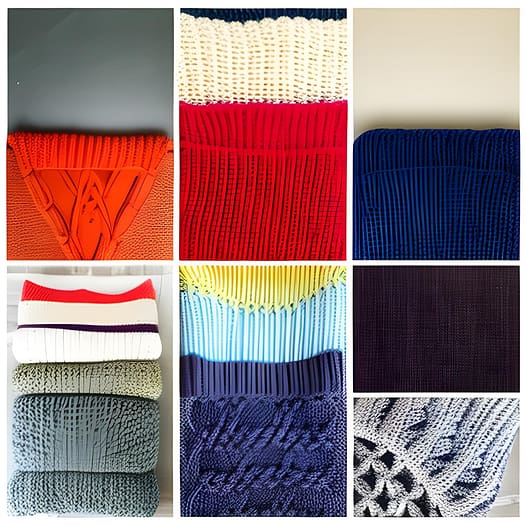
Sweater materials play a crucial role in determining their warmth, durability, and comfort. By understanding the significance of different sweater materials, you can make informed choices that align with your preferences and requirements.
Common sweater materials encompass a wide range of options, each with its own unique qualities. Here are some of the most popular materials used in sweaters:
- Wool: Wool is a natural fiber known for its exceptional insulation properties. It provides excellent warmth while allowing breathability. Wool sweaters are durable, moisture-wicking, and can retain heat even when damp. Merino wool, in particular, is highly regarded for its softness and itch-free feel.
- Cashmere: Cashmere is a luxurious and sought-after material made from the fine undercoat of cashmere goats. It is incredibly soft, lightweight, and provides exceptional insulation. Cashmere sweaters are highly regarded for their elegance and superior warmth. They offer a cozy and indulgent experience, making them ideal for colder climates.
- Cotton: Cotton is a widely used and versatile sweater material. It is breathable, hypoallergenic, and comfortable against the skin. Cotton sweaters are lightweight and suitable for milder weather conditions. They are easy to care for and come in a variety of styles and designs.
- Acrylic: Acrylic is a synthetic fiber often used as an affordable alternative to natural materials. Acrylic sweaters are lightweight, soft, and easy to maintain. They offer good insulation and are less prone to wrinkling and shrinking. Acrylic blends can mimic the texture and appearance of natural fibers while providing cost-effective options.
- Blends: Sweaters often feature blended materials, combining the advantages of different fibers. Common blends include wool and acrylic, cotton and cashmere, or wool and nylon. Blends can offer enhanced durability, affordability, and performance, combining the desired characteristics of multiple materials.
Each sweater material has its own set of characteristics and benefits:
- Wool provides excellent warmth, moisture management, and durability. It is ideal for cold weather and outdoor activities.
- Cashmere offers unmatched softness, lightweight warmth, and a luxurious feel. It adds a touch of elegance to any outfit.
- Cotton is breathable, hypoallergenic, and suitable for year-round wear. It is great for layering and provides comfort in moderate climates.
- Acrylic is lightweight, affordable, and easy to care for. It can mimic the qualities of natural fibers and is suitable for various weather conditions.
- Blends combine the best features of different materials, offering a balance of comfort, durability, and affordability.
Understanding the characteristics and benefits of different sweater materials empowers you to choose the most suitable option based on your climate, preferences, and style requirements. Whether you prioritize warmth, softness, breathability, or a blend of qualities, selecting the right material ensures you can enjoy your sweaters to the fullest.
Understanding Different Types of Sweaters:Classic Sweater Styles
Classic sweaters, one of the favorite styles of sweaters have stood the test of time and remain eternally fashionable. These versatile garments are essential additions to any wardrobe, offering both comfort and style. Introducing classic sweater styles allows you to explore the different options available and understand their enduring appeal.
Features, Characteristics, Styling Tips and Outfit Suggestions of Each Style:
- Crew Neck Sweaters:
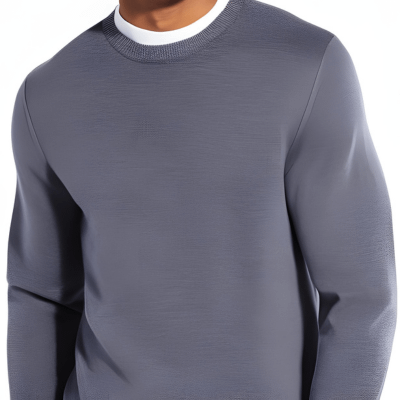
Crew neck sweaters feature a rounded neckline that sits just below the base of the neck. They have a timeless and versatile design that suits various occasions. Crew neck sweaters are known for their simplicity and can be easily layered or worn as standalone pieces. They offer a classic, casual look that pairs well with jeans, trousers, or skirts.
Crew Neck Sweaters: For a classic, effortless look, pair a crew neck sweater with jeans and ankle boots. To add a touch of sophistication, layer it over a collared shirt and team it with tailored pants. Consider accessorizing with a statement necklace or a scarf to elevate the outfit further.
- V-neck Sweaters:

V-neck sweaters are characterized by a V-shaped neckline that elongates the neck and adds a touch of elegance. This style is often considered more formal than crew neck sweaters, making it suitable for both professional and social settings. V-neck sweaters can be paired with collared shirts for a preppy look or worn alone for a chic and relaxed outfit.
V-neck Sweaters: Create a polished ensemble by combining a V-neck sweater with tailored trousers and pumps. To achieve a more casual outfit, wear it with denim jeans and sneakers. Experiment with layering by adding a collared shirt underneath or a blazer on top for a smart-casual appearance.
- Turtleneck Sweaters:
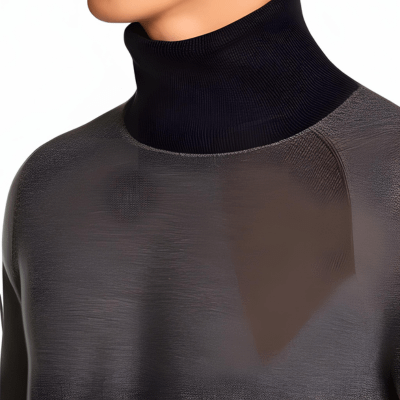
Turtleneck sweaters feature a high, close-fitting collar that covers the neck. They provide exceptional warmth and are often favored during colder seasons. Turtlenecks exude sophistication and can be dressed up or down. They can be paired with tailored trousers or skirts for a polished, office-appropriate ensemble or worn with jeans for a cozy, casual look.
Embrace a chic and cozy look by pairing a turtleneck sweater with high-waisted jeans and knee-high boots. For a more elegant outfit, style it with a midi skirt and heels. Layer a blazer or a structured coat over the turtleneck sweater for a sophisticated winter ensemble.
- Cardigans:
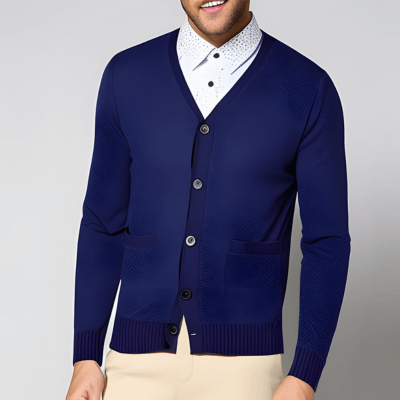
Cardigans are open-front sweaters that can be buttoned or fastened with a belt. Different types of cardigans offer versatility and can be styled in numerous ways. Cardigans are perfect for layering and adding texture to outfits. They come in various lengths, from hip-length to longline, and can be worn with dresses, skirts, or pants. Cardigans are a stylish option for both formal and casual occasions.
Wear a buttoned cardigan over a blouse or a camisole with a skirt or tailored pants for a refined, office-ready outfit. For a relaxed, weekend look, layer an oversized cardigan over a basic t-shirt and jeans. Cinch a longline cardigan with a belt to create a flattering silhouette.
By providing styling tips and outfit suggestions for each classic sweater style, readers can explore different ways to incorporate these timeless pieces into their wardrobes. Whether they seek a casual or formal look, they’ll have the tools to create stylish and versatile outfits using these classic sweater styles.
Trendy Sweater Designs
Sweater designs continuously evolve, reflecting the ever-changing world of fashion. By exploring the latest trends in sweater designs, you can stay up-to-date with the most fashionable options available. Discovering new patterns, prints, and textures allows you to add a modern touch to your wardrobe while embracing the cozy comfort of sweaters.
Popular Patterns, Prints, and Textures in Sweaters:
- Fair Isle Sweaters:
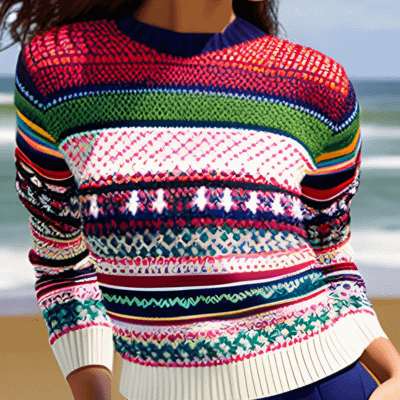
Fair Isle sweaters feature traditional Scottish patterns characterized by intricate colorwork,cool sweater designs and geometric motifs. These sweaters often incorporate multiple colors, creating a visually appealing and cozy design. Fair Isle sweaters are versatile and can be worn for casual outings or paired with skirts or trousers for a more polished look.
- Cable-Knit Sweaters:
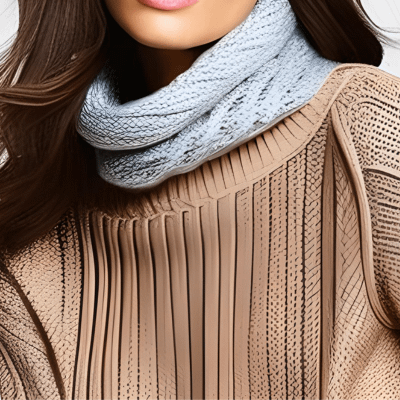
Cable-knit sweaters showcase an interwoven pattern of twisted cables, adding depth and texture to the garment. This classic design exudes sophistication and is favored for its timeless appeal. Cable-knit sweaters are available in various styles, including crew neck, turtleneck, and cardigan options, making them versatile for different occasions.
- Chunky Oversized Sweaters:

Chunky oversized sweaters have gained popularity in recent years. These cozy and relaxed garments offer a comfortable, slouchy fit, perfect for casual and laid-back outfits. They come in various knit patterns and textures, providing warmth and a stylish, effortless look. Women chunky oversized sweaters can be paired with leggings, skinny jeans, or skirts for a cozy yet trendy ensemble.
- Embellished Sweaters:
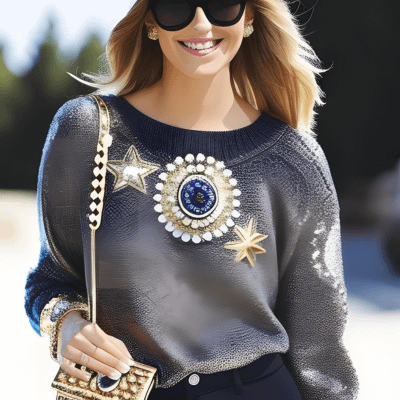
Embellished sweaters feature decorative elements such as sequins, beads, embroidery, or appliques. These intricate details add a touch of glamor and sophistication to the sweater, transforming it into a statement piece. Embellished sweaters can be paired with different types of pants like tailored pants or skirts for special occasions or dressed down with jeans for a chic and stylish daytime look.
Guidance on Incorporating Trendy Designs into Your Wardrobe:
- Fair Isle Sweaters: Pair a Fair Isle sweater with jeans or corduroy pants for a cozy and casual outfit. Complete the look with ankle boots and a chunky scarf. For a more polished ensemble, combine it with a solid-colored skirt or trousers and knee-high boots.
- Cable-Knit Sweaters: Layer a cable-knit sweater over a collared shirt and wear it with tailored pants for a smart-casual outfit suitable for the office. Alternatively, style it with jeans or a skirt and ankle boots for a relaxed yet put-together look.
- Chunky Oversized Sweaters: Create a comfortable and chic outfit by pairing a chunky oversized sweater with leggings or skinny jeans. Complete the look with ankle boots or knee-high boots and accessorize with statement earrings or a wide-brimmed hat.
- Embellished Sweaters: Dress up an embellished sweater by wearing it with a high-waisted skirt or tailored pants. Opt for minimal accessories to allow the sweater to take center stage. For a more casual look, pair it with jeans and heels or boots.
Incorporating trendy sweater designs into your wardrobe allows you to express your personal style while staying fashionable. Experiment with different patterns, prints, and textures, and don’t be afraid to mix and match with other pieces in your closet. Remember, the key is to have fun and embrace the warmth and style that trendy sweater designs offer.
Sweater Seasonal Guide
Sweaters are not only versatile in style but also in their suitability for various seasons. From our experience in production services, we are able to explain the compatibility of different sweaters with each season helps readers choose the right garments for optimal comfort and style throughout the year.
Lightweight Sweaters for Spring and Summer, and Heavier Options for Fall and Winter
- Spring and Summer:
During these seasons, lightweight sweaters are preferred to provide a touch of warmth without overheating. Opt for breathable materials like cotton or linen blends. Sweaters with short sleeves or three-quarter sleeves are excellent choices for a breezy and comfortable feel. Choose lighter colors and open-knit designs to allow for airflow. Lightweight cardigans or cotton pullovers are perfect for layering over dresses or pairing with shorts or skirts.
- Fall and Winter:
As temperatures drop, heavier sweaters come into play to provide insulation and protection against the cold. Wool, cashmere, or wool-blend sweaters are ideal for their exceptional warmth. Look for chunky knits, cable patterns, or ribbed textures for added coziness. Turtleneck or mock-neck sweaters are great options for trapping heat around the neck. Sweaters in darker shades or earth tones align well with the autumnal and wintery aesthetics.
Recommendations on Layering Techniques and Seasonal Accessories
Layering Techniques:
- Spring and Summer: Pair lightweight sweaters with tanks, camisoles, or lightweight shirts. Experiment with layering by wearing a sweater over a sundress or combining it with a light scarf. Tie a sweater around the waist for a stylish and functional accessory.
- Fall and Winter: Layer heavier sweaters over long-sleeved shirts or turtlenecks. Add warmth and dimension by incorporating vests or jackets. For a trendy look, layer a buttoned cardigan under a coat or pair a turtleneck sweater with a blazer. Consider layering a tunic-length sweater over leggings or skinny jeans for a cozy and stylish ensemble.
Seasonal Accessories:
- Spring and Summer: Accessorize lightweight sweaters with straw hats, sunglasses, and lightweight scarves. Opt for colorful or printed scarves to add a pop of vibrancy to your outfit. Complete your look with open-toe sandals or canvas sneakers.
- Fall and Winter: Embrace the colder months by accessorizing with cozy items such as beanies, gloves, and chunky scarves. Add texture and style with statement belts or brooches. Pair your sweaters with ankle boots or knee-high boots to keep your feet warm while adding a fashionable touch.
By explaining the suitability of different sweaters for each season, providing recommendations for lightweight and heavier options, and suggesting layering techniques and seasonal accessories, readers can confidently select sweaters that align with the weather and create stylish ensembles throughout the year.
Sweater Care and Maintenance

Practical Tips for Proper Sweater Care
To ensure the longevity of your sweaters, it’s important to follow these practical care tips:
- Read and follow the care instructions on the garment’s label.
- Hand-wash delicate sweaters or use the gentle cycle on your washing machine with a mild detergent.
- Avoid using bleach or harsh chemicals that can damage the fabric.
- Dry sweaters flat on a clean towel to maintain their shape and prevent stretching.
- Fold sweaters instead of hanging them to avoid stretching and hanger marks.
- Remove pills using a fabric shaver or sweater stone, gently gliding it over the surface.
- Store sweaters in a cool, dry place to prevent moisture and potential damage from moths.
Washing, Drying, and Storing Sweaters
Proper washing, drying, and storing techniques contribute to maintaining the quality of your sweaters:
- Sort sweaters by color and fabric to prevent color bleeding or damage.
- Use cold water for washing to minimize shrinkage and color fading.
- Avoid wringing or twisting sweaters; instead, gently squeeze out excess water.
- Lay sweaters flat on a clean, absorbent towel to dry, reshaping them if necessary.
- Store sweaters in breathable storage bags or folded on shelves to protect them from dust and moths. Consider adding cedar blocks or lavender sachets to deter pests.
Dealing with Common Sweater Issues
Address common sweater issues with these helpful tips:
- Pilling: Remove pills using a fabric shaver, sweater stone, or a gentle razor. Avoid pulling at the pills, as it may cause damage.
- Stretching: To shrink a stretched sweater, dampen it, place it in a mesh laundry bag, and tumble dry on low heat. Alternatively, you can try gently steaming the sweater to restore its shape.
Budget-Friendly Sweater Options
There are a few options through which you can select and find budget friendly options for yourself.
- Achieving Style and Comfort on a Budget
- Style and comfort can be attained without breaking the bank. It’s possible to find affordable sweater options that offer good quality and style.
- Suggested Affordable Sweater Brands or Retailers
Consider the following brands or retailers that offer budget-friendly sweaters without compromising quality:
- Uniqlo: Known for their affordable and well-made basics, Uniqlo offers a range of sweater options in various styles and materials.
- H&M: H&M provides a wide selection of trendy and affordable sweaters suitable for different budgets.
- Target: Target offers affordable sweater options with different styles, colors, and sizes to cater to a variety of preferences.
- Tips for Finding Sales, Discounts, and Secondhand Options
To save money on sweater purchases, keep these tips in mind:
- Shop during seasonal sales, such as Black Friday, end-of-season clearances, or holiday promotions.
- Sign up for newsletters or follow brands on social media to receive updates on sales and discounts.
- Explore secondhand options through consignment stores, online marketplaces, or thrift shops, where you can find quality sweaters at lower prices.
Conclusion
In this blog, we explored various aspects of different types of sweaters, including understanding materials, classic styles, seasonal suitability, care and maintenance, budget-friendly options, and more. We as a UK based clothing manufacturer are pretty well familiar with the significance of good sweaters especially to face british winters. Sweaters have proven themselves as versatile and comfortable wardrobe staples that can be dressed up or down for various occasions.
They provide warmth, style, and endless possibilities for creating fashionable outfits.We encourage readers to embrace their personal fashion needs by experimenting with different sweater styles, materials, and brands. By exploring various options and finding what works best for them, readers can elevate their style and enjoy the comfort that sweaters bring to their everyday lives.
Don’t hesitate to find out which type of sweaters would look best on you. If you are a brand or clothing company looking for the best clothing manufacturers with experience in sweater manufacturing, feel free to contact us.
Frequently Asked Questions
1. What’s the difference between a sweater and a sweatshirt?
A sweater is a knitted garment usually made of wool, although it can be made of other materials as well. It is typically thicker and heavier than a sweatshirt and is designed to provide warmth. Sweaters come in various styles, such as pullovers or cardigans, and can have different necklines like crew necks or V-necks.
On the other hand, a sweatshirt is a loose-fitting garment made of a soft and often fleecy fabric, such as cotton. It is lighter than a sweater and is commonly associated with casual or athletic wear. Sweatshirts often have a hood and a front pocket, although not all sweatshirts have these features. They are designed for comfort and are commonly worn during physical activities or for a relaxed, casual look.
2. How to make a sweater shorter without cutting it?
To make a sweater shorter without cutting it, you can try the following methods:
- Folding and tucking: Start by putting on the sweater and identifying how much shorter you want it to be. Then, fold the excess fabric upwards from the bottom hem and tuck it into the waistband or the inside of the sweater. This technique works well if the fabric is not too bulky.
- Sewing: If you have basic sewing skills, you can use a needle and thread or a sewing machine to alter the length of the sweater. Carefully measure the desired length and mark it on the sweater. Then, using a straight stitch, sew a new hemline along the marked area. Be sure to try the sweater on before sewing to ensure the desired length is achieved.
- Ruching or gathering: Another option is to create a gathered effect to shorten the sweater. Using a needle and thread, make small running stitches along the desired length, leaving long thread tails at both ends. Once the stitches are in place, gently pull the thread tails to gather the fabric and create a ruched effect. Secure the thread tightly to hold the gathers in place.
- Using elastic: If you prefer a more adjustable method, you can add elastic to the waistband or hemline of the sweater. Measure the desired length and cut a piece of elastic slightly shorter than that measurement. Attach the elastic to the inside of the sweater using a zigzag stitch, stretching it as you sew to create a gathered effect.
3. What’s the difference between a sweater and a jumper?
A sweater and a jumper are both types of knitted garments worn to provide warmth and comfort, particularly during colder seasons. The main difference between the two lies in regional terminology.
In North America, the term “sweater” is commonly used to refer to a knitted garment that is typically worn over a shirt or blouse. Sweaters can come in various styles, including pullovers (with no front opening) or cardigans (with a front opening and buttons or a zipper).
On the other hand, in British English, the term “jumper” is used instead of “sweater.” A jumper in British English typically refers to a knitted garment that is worn over a shirt or blouse. The term “jumper” is often used to describe pullovers specifically, and it is less commonly used for cardigans.